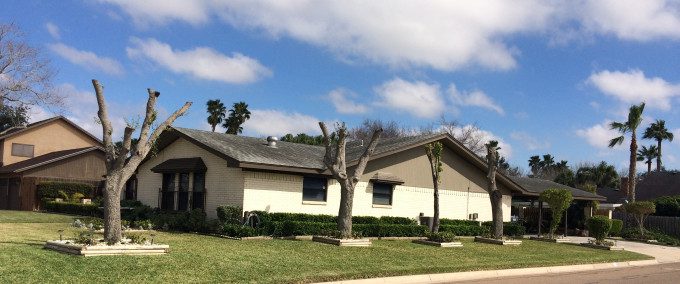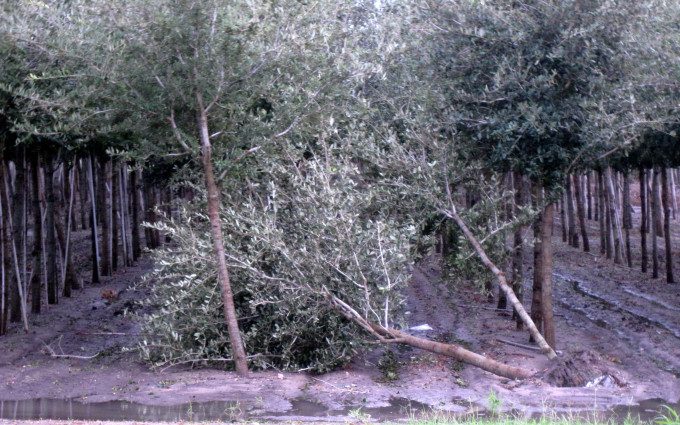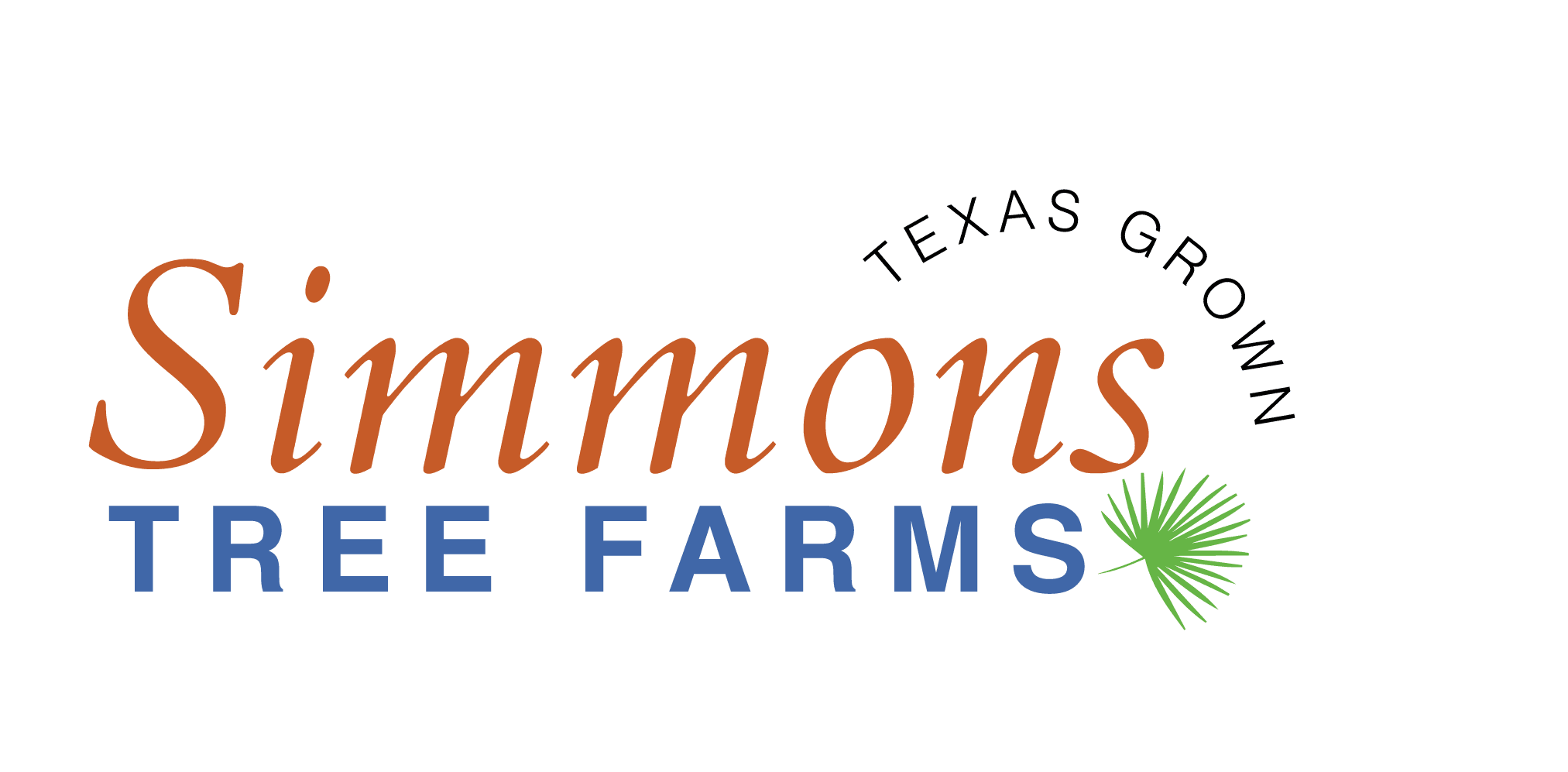With hurricane season beginning within the week, it’s a great time to assess your trees and try to anticipate which might be vulnerable to wind damage. Typical wind damage includes loss of limbs, split trunk, and total uprooting of the tree.
After Hurricane Dolly, we had a 50 or 60 year old Ash tree just blow over. The most likely cause was saturated soil combined with sustained hurricane winds. When we moved to this home eight years before, we diverted the gray water from our washing machine to a dry back area of the yard. It did a wonderful job watering this old Ash tree and a few surrounding plantings. Two weeks before the hurricane, we had a 10 inch rain. Hurricane Dolly added more rain and then her winds moved the tree for many hours. The soggy soil allowed the below-ground growth to move until the roots broke and the tree fell.
Removing large branches or excessive “thinning” of the branches will leave a tree vulnerable to wind damage. Cutting a large branch can cause decay and cracking. When a tree is pruned, it takes time for the tree to heal over the wound. The smaller the wound, the quicker that healing takes place. Also, some trees are better at healing than others. Ash and many of the tropicals, such as Royal Poinciana, Jacaranda, and Ficus, are poor healers, ending up with hollow or split branches and trunks. Most fast growing trees are poor healers. Thinning a canopy may get more light to the ground below, but it will leave the remaining branches vulnerable to wind damage. This goes double – or triple – or quadruple for topped trees. Not only are they extremely ugly, their joints are weak and prone to snapping in even a slight breeze.

Even if these trees manage to grow a decent looking canopy, structurally, they have been ruined. The best plan is preventative pruning every 3 – 5 years by a certified arborist.
The experts tell us that the areas with more tree cover tends to have less wind damage. The trees protect each other from high winds.

Even in this field of relatively small trees, it’s the trees at the edge that incur the wind damage.
According to the Texas Forest Service, some varieties that are less susceptible to wind damage include, Texas Sabal, Live Oak, Sycamore, and Bald Cypress. I think you can include any locally native tree to this list.
Your trees are a huge investment – both in cash and in time. Protect your investment with quality care!
